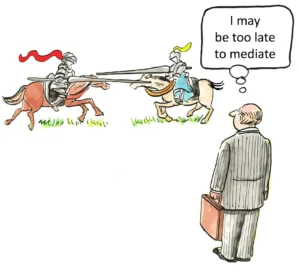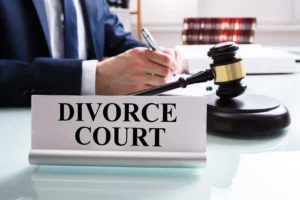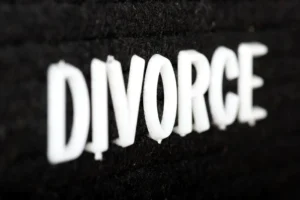What Legal Issues Arise from AI’s Role in Content Creation?
The rapid advancement of artificial intelligence in content creation has ushered in a new era of legal challenges and uncertainties. As AI systems become increasingly sophisticated in generating text, images, music, and other forms of creative output, the traditional boundaries of copyright law and intellectual property rights are being tested and redefined. This evolving landscape raises critical questions about authorship, ownership, and the very nature of creativity in the digital age.
At the heart of these legal issues lies the fundamental question of whether AI-generated content can be protected by copyright at all. The longstanding principle that copyright protection extends only to “original works of authorship” created by humans is now under scrutiny. As AI systems produce works that are increasingly indistinguishable from those created by human authors, the legal system must grapple with how to categorize and protect these outputs.
The U.S. Copyright Office has taken a clear stance on this matter, affirming that copyright protection can only be granted to works that involve human authorship. This position was recently reinforced in the Office’s 2025 report on AI and copyright, which emphasized that the mere use of AI tools in the creative process does not preclude copyright eligibility, but the human contribution must be substantial and independently copyrightable.
This stance has significant implications for creators, businesses, and the AI industry as a whole. It suggests that many AI-generated works may fall into the public domain, lacking the protection afforded to human-authored content. This creates a complex landscape where the value and ownership of AI-generated content become increasingly ambiguous.
The legal issues surrounding AI-generated content extend beyond questions of copyrightability. They encompass a range of concerns including liability for infringement, the rights of AI developers versus users, and the potential for AI systems to replicate copyrighted works without authorization. These challenges are further complicated by the global nature of content creation and distribution, as different jurisdictions may adopt varying approaches to AI and copyright law.
As we delve deeper into these issues, it becomes clear that the legal framework surrounding AI-generated content is still in its infancy. Courts, legislators, and intellectual property offices around the world are grappling with how to apply existing laws to this new technological frontier, while also considering whether new legislation is necessary to address the unique challenges posed by AI.
The implications of these legal issues are far-reaching, affecting not only individual creators and AI developers but also industries ranging from publishing and entertainment to advertising and journalism. As AI continues to play an increasingly prominent role in content creation, understanding and navigating these legal challenges will be crucial for anyone involved in the creative process.
Copyright and Authorship in AI-Generated Content
The concept of authorship is fundamental to copyright law, traditionally centered on human creativity and originality. However, the rise of AI-generated content challenges this foundational principle. When an AI system produces a piece of writing, a musical composition, or a visual artwork, who can claim authorship? Is it the developer of the AI system, the user who provided the prompts, or does the work fall into a legal gray area with no clear author?
The U.S. Copyright Office has taken a firm stance on this issue, maintaining that copyright protection can only be extended to works that involve human authorship. This position is rooted in the longstanding legal principle that copyright is designed to incentivize and protect human creativity. The Office’s 2025 report on AI and copyright reaffirms this view, stating that AI-generated outputs can only be protected by copyright where a human author has determined sufficient expressive elements.
This approach creates a spectrum of scenarios with varying degrees of copyright protection. On one end, works created entirely by AI with minimal human input are likely to be deemed ineligible for copyright protection. On the other end, works where AI is used as a tool within a broader creative process directed by a human author may qualify for protection, but only for the elements that reflect human creativity.
The legal community and courts are now tasked with drawing the line between these extremes. What constitutes “sufficient” human input to warrant copyright protection? How much creative control must a human exert over the AI-generated output to claim authorship? These questions are likely to be the subject of ongoing legal debate and litigation in the coming years.
Moreover, the issue of authorship in AI-generated content has implications beyond copyright law. It touches on questions of moral rights, attribution, and the very nature of creativity. As AI systems become more advanced, capable of producing works that are indistinguishable from those created by humans, society may need to reconsider its understanding of authorship and creativity.
The authorship question also raises practical challenges for content creators and businesses. How should they approach the use of AI in their creative processes to ensure their works are protected? Should they implement strategies to document and emphasize the human creative input in AI-assisted works? These considerations are likely to shape creative workflows and business practices in industries relying on AI for content creation.
Liability and Infringement Concerns
As AI systems become more sophisticated in generating content, questions of liability for copyright infringement become increasingly complex. Who is responsible when an AI system produces content that infringes on existing copyrights? Is it the developer of the AI system, the user who prompted the creation, or perhaps the AI itself?
Currently, the legal framework is not fully equipped to address these questions. Traditional copyright law assumes human agency in acts of infringement, but AI systems operate with a degree of autonomy that challenges this assumption. This creates a potential liability gap that could have significant implications for both AI developers and users.
One of the primary concerns is the potential for AI systems to inadvertently reproduce copyrighted material. AI models are trained on vast datasets, often including copyrighted works. While the training process itself may be protected under fair use doctrine in some jurisdictions, the outputs generated by these models may closely resemble existing works, raising questions of infringement.
This issue has already led to legal challenges. In 2025, several high-profile lawsuits were filed against AI companies by content creators alleging that AI-generated outputs infringed on their copyrighted works. These cases highlight the need for clearer legal guidelines on how copyright law applies to AI-generated content and who bears responsibility for potential infringement.
The liability question extends beyond direct copying. AI systems may also create derivative works or produce content that is substantially similar to existing copyrighted material. Determining infringement in these cases can be particularly challenging, as it requires assessing the degree of similarity and the extent of transformation.
For AI developers, these liability concerns create a complex risk landscape. They must navigate the fine line between creating powerful, versatile AI systems and ensuring these systems do not infringe on existing copyrights. This may require implementing safeguards, such as content filters or copyright checking mechanisms, which could potentially limit the capabilities of their AI systems.
Users of AI content generation tools also face uncertainty. When using these tools for commercial purposes, they may unknowingly produce infringing content, exposing themselves to legal risk. This creates a need for clear guidelines and best practices for using AI in content creation, as well as potential indemnification agreements between AI providers and users.
The issue of liability also raises questions about the applicability of existing copyright exceptions and limitations, such as fair use, to AI-generated content. How should these doctrines be applied when the “user” is an AI system? This is an area where courts and policymakers will need to provide guidance in the coming years.
Data Privacy and Training Data Concerns
The development of AI systems capable of generating high-quality content relies heavily on vast amounts of training data. This data often includes copyrighted works, personal information, and other potentially sensitive material. The use of this data raises significant legal and ethical concerns related to privacy, consent, and fair use.
One of the primary issues is the potential violation of data privacy laws when using personal information to train AI models. Regulations such as the General Data Protection Regulation (GDPR) in the European Union and the California Consumer Privacy Act (CCPA) in the United States impose strict requirements on the collection, use, and storage of personal data. AI developers must navigate these regulations carefully to ensure their data collection and usage practices comply with applicable laws.
The use of copyrighted works as training data also presents legal challenges. While some jurisdictions may consider this use to fall under fair use or similar doctrines, the legal landscape is far from settled. Content creators and rights holders have expressed concerns about their works being used without permission or compensation to train AI systems that could potentially compete with or replace human creators.
These concerns have led to legal actions against AI companies. In 2025, several high-profile lawsuits were filed by authors, artists, and media companies alleging that their copyrighted works were used without permission to train AI models. These cases highlight the need for clearer legal guidelines on the use of copyrighted material in AI training.
The issue of consent is particularly complex in the context of AI training data. When individuals share content online, they may not anticipate or consent to that content being used to train AI systems. This raises questions about the ethical and legal obligations of AI developers to obtain consent or provide opt-out mechanisms for data subjects.
Moreover, the use of training data can perpetuate biases and inaccuracies present in the original data. This raises concerns about the potential for AI-generated content to spread misinformation or reinforce harmful stereotypes. AI developers and users must be aware of these risks and implement strategies to mitigate them.
The legal and ethical issues surrounding training data also extend to the outputs generated by AI systems. There are concerns about the potential for these systems to produce content that violates privacy rights, such as generating realistic images of individuals without their consent. This creates new challenges for privacy law and raises questions about the rights of individuals to control their likeness and personal information in the age of AI.
As AI technology continues to advance, addressing these data privacy and training data concerns will be crucial. This may require new legal frameworks, industry standards, and ethical guidelines to ensure that AI development respects individual privacy rights and intellectual property while still fostering innovation.
Transparency and Disclosure Requirements
As AI-generated content becomes increasingly prevalent and sophisticated, there is a growing call for transparency and disclosure requirements. These requirements aim to ensure that consumers and users are aware when they are interacting with or consuming AI-generated content, rather than human-created work.
The push for transparency is driven by several concerns. First, there is a fear that AI-generated content could be used to spread misinformation or manipulate public opinion if passed off as human-created. This is particularly concerning in areas such as journalism, where the credibility and sourcing of information are crucial.
Second, there are ethical considerations about the right of consumers to know the origin of the content they are consuming. This is especially relevant in creative fields, where the identity and reputation of the creator often play a significant role in how the work is perceived and valued.
In response to these concerns, some jurisdictions have begun to consider or implement disclosure requirements for AI-generated content. For example, in 2025, the European Union proposed regulations requiring clear labeling of AI-generated content in certain contexts, such as news articles and commercial advertisements.
These transparency requirements present both challenges and opportunities for businesses and content creators. On one hand, they may limit the seamless integration of AI-generated content into existing workflows and potentially create a stigma around AI-generated work. On the other hand, they could foster trust with consumers and provide a framework for the ethical use of AI in content creation.
Implementing effective disclosure mechanisms is not without its challenges. As AI becomes more sophisticated, it may become increasingly difficult to distinguish between AI-generated and human-created content. This raises questions about what level of AI involvement necessitates disclosure and how such disclosures should be made.
Moreover, there are concerns about the potential for these requirements to stifle innovation or create undue burdens on smaller creators and businesses. Striking the right balance between transparency and practicality will be a key challenge for policymakers in this area.
The issue of transparency also intersects with questions of liability and authorship. If AI-generated content is clearly labeled as such, how does this affect copyright claims or liability for potential infringement? These are questions that courts and legislators will need to grapple with as transparency requirements evolve.
Despite these challenges, the trend towards greater transparency in AI-generated content is likely to continue. As AI becomes more pervasive in content creation, establishing clear guidelines and best practices for disclosure will be crucial in maintaining public trust and ensuring the ethical use of this technology.
International Legal Challenges and Harmonization Efforts
The global nature of content creation and distribution in the digital age presents significant challenges when it comes to addressing the legal issues surrounding AI-generated content. Different jurisdictions may have varying approaches to copyright law, AI regulation, and data privacy, creating a complex landscape for creators, businesses, and AI developers to navigate.
One of the primary challenges is the potential for conflicting legal standards across different countries. What may be considered fair use of copyrighted material for AI training in one jurisdiction could be deemed infringement in another. Similarly, transparency requirements or liability standards for AI-generated content may vary significantly from one country to another.
This lack of harmonization can create significant legal uncertainty and risk for companies operating globally. It may also lead to forum shopping, where parties seek to litigate in jurisdictions with more favorable laws, potentially undermining the effectiveness of local regulations.
Efforts are underway to address these challenges through international cooperation and harmonization of laws. Organizations such as the World Intellectual Property Organization (WIPO) have begun to explore the implications of AI for intellectual property law on a global scale. However, reaching international consensus on these complex issues is likely to be a long and challenging process.
In the meantime, companies and creators must navigate this patchwork of international regulations. This often requires a nuanced understanding of local laws and careful consideration of how AI-generated content is used and distributed across different jurisdictions.
The international dimension also raises questions about jurisdiction and enforcement. When AI-generated content is created in one country, hosted in another, and accessed globally, determining which laws apply and how they can be enforced becomes increasingly complex.
Moreover, the rapid pace of AI development often outstrips the ability of legal systems to adapt, particularly at an international level. This creates a constant tension between fostering innovation and ensuring adequate legal protections.
Despite these challenges, the importance of addressing these issues on a global scale cannot be overstated. As AI continues to play an increasingly significant role in content creation, finding ways to harmonize legal approaches across jurisdictions will be crucial in providing clarity and protection for all stakeholders involved.
The Future of AI and Content Creation Law
As we look to the future, it is clear that the legal landscape surrounding AI-generated content will continue to evolve rapidly. The challenges and questions raised by this technology are likely to shape copyright law, intellectual property rights, and content regulation for years to come.
One potential direction is the development of new legal frameworks specifically designed to address AI-generated content. This could include new categories of intellectual property rights that recognize the unique nature of AI-created works, or modified versions of existing copyright protections that account for the role of AI in the creative process.
Another possibility is the increased use of technological solutions to address legal challenges. For example, blockchain technology could be used to create immutable records of content creation, helping to establish provenance and ownership of AI-generated works. Similarly, advanced content recognition systems could be developed to help identify potential copyright infringement in AI-generated content.
The role of AI itself in addressing these legal challenges is also likely to grow. AI systems could be developed to assist in copyright enforcement, helping to identify potential infringement more accurately and efficiently than current methods. Similarly, AI could play a role in content moderation, helping to ensure compliance with transparency requirements and other regulations.
However, as AI technology continues to advance, new legal challenges are likely to emerge. The development of more sophisticated AI systems capable of generating increasingly complex and nuanced content may further blur the lines between human and machine creativity, necessitating ongoing legal and ethical discussions.
Moreover, the potential for AI to generate content that is indistinguishable from human-created work raises profound questions about the nature of creativity and authorship. This could lead to a fundamental reassessment of copyright law and its underlying principles.
The intersection of AI and content creation law also has broader societal implications. As AI-generated content becomes more prevalent, it could impact employment in creative industries, raise new questions about media literacy and trust, and potentially influence cultural production and consumption in significant ways.
Addressing these challenges will require ongoing collaboration between legal experts, policymakers, technologists, and content creators. It will also necessitate a flexible and adaptive approach to regulation, one that can keep pace with rapid technological advancements while still providing necessary protections and clarity.
As we navigate this complex and evolving landscape, one thing is clear: the legal issues arising from AI’s role in content creation will continue to be at the forefront of discussions about technology, creativity, and the law for the foreseeable future. How we address these challenges will play a crucial role in shaping the future of content creation and consumption in the digital age.
Citations:
- https://www.acrolinx.com/blog/ai-laws-for-content-creation/
- https://www.euronews.com/next/2023/07/10/copyright-challenges-in-the-age-of-ai-who-owns-ai-generated-content
- https://originality.ai/blog/ai-content-ownership
- https://digiday.com/marketing/how-generative-ai-is-changing-creator-contracts-to-prevent-brand-and-copyright-risks/
- https://itsartlaw.org/2025/03/04/recent-developments-in-ai-art-copyright-copyright-office-report-new-registrations/
- https://nogood.io/2025/01/07/content-creation-trends-2025/
- https://thebarristergroup.co.uk/blog/ai-generated-content-and-copyright-evolving-legal-boundaries-in-english-law
- https://www.weforum.org/stories/2024/01/cracking-the-code-generative-ai-and-intellectual-property/
- https://www.forbes.com/sites/ronschmelzer/2024/07/18/what-is-the-future-of-intellectual-property-in-a-generative-ai-world/
- https://techpolicy.press/generative-ai-and-copyright-issues-globally-ani-media-v-openai
- https://365datascience.com/trending/ai-trends/
- https://newsroom.loc.gov/news/copyright-office-releases-part-2-of-artificial-intelligence-report/s/f3959c36-d616-498d-b8f9-67641fd18bab
- https://iapp.org/news/a/generative-ai-and-intellectual-property-copyright-implications-for-ai-inputs-outputs
- https://www.forbes.com/councils/forbestechcouncil/2024/05/14/understanding-the-legal-and-regulatory-landscape-of-generative-ai/
- https://www.diplomacy.edu/blog/ai-generated-content-and-ip-rights-challenges-and-policy-considerations/
- https://www.dentons.com/en/insights/articles/2025/january/28/ai-and-intellectual-property-rights
- https://hbr.org/2023/04/generative-ai-has-an-intellectual-property-problem
- https://issues.org/generative-ai-copyright-law-crawford-schultz/
- https://www.wipo.int/about-ip/en/frontier_technologies/pdf/generative-ai-factsheet.pdf
- https://chambers.com/articles/legal-issues-with-ai-generated-content-copyright-and-chatgpt
- https://www.pymnts.com/artificial-intelligence-2/2024/navigating-ai-copyright-presents-challenges-for-industry/
- https://rouse.com/insights/news/2024/how-does-artificial-intelligence-affect-intellectual-property-protection
- https://mitsloan.mit.edu/ideas-made-to-matter/legal-issues-presented-generative-ai
- https://www.copyright.gov/newsnet/2025/1060.html
- https://www.reuters.com/legal/litigation/tech-companies-face-tough-ai-copyright-questions-2025-2024-12-27/
- https://www.jw.com/news/insights-federal-court-ai-copyright-decision/
- https://sites.usc.edu/iptls/2025/02/04/ai-copyright-and-the-law-the-ongoing-battle-over-intellectual-property-rights/
- https://www.synthesia.io/post/ai-tools
- https://www.quarles.com/newsroom/publications/competitive-ai-use-may-raise-ip-issues
- https://www.dentons.com/en/insights/articles/2025/january/10/ai-trends-for-2025-ip-protection-and-enforcement
- https://sloanreview.mit.edu/article/five-trends-in-ai-and-data-science-for-2025/
- https://reutersinstitute.politics.ox.ac.uk/news/how-ai-reshaping-copyright-law-and-what-it-means-news-industry
- https://www.sidley.com/en/insights/newsupdates/2025/02/us-copyright-office-issues-report-on-artificial-intelligence-and-copyrightability
- https://explodingtopics.com/blog/ai-statistics
- https://www.bakerlaw.com/services/artificial-intelligence-ai/case-tracker-artificial-intelligence-copyrights-and-class-actions/
- https://news.iu.edu/live/news/31782-ask-the-expert-what-are-legal-issues-surrounding-ai-it
- https://yourgpt.ai/blog/general/are-there-legal-copyright-issues-chatgpt-content
- https://www.reddit.com/r/Blogging/comments/1im9bfu/ai_seo_trends_for_content_creators_in_2025/
- https://buffer.com/resources/ai-social-media-content-creation/




















